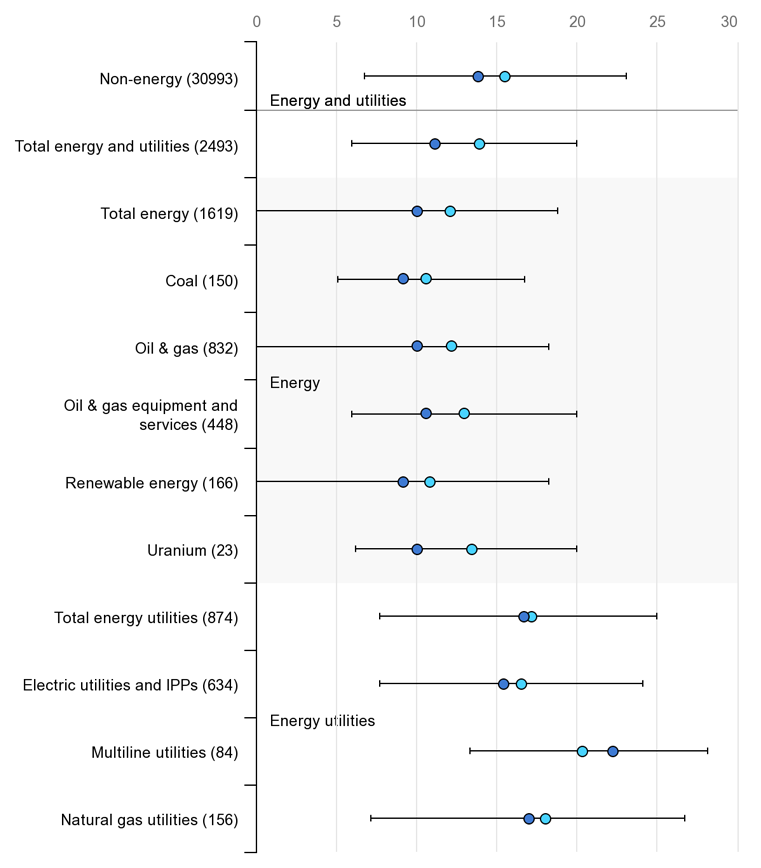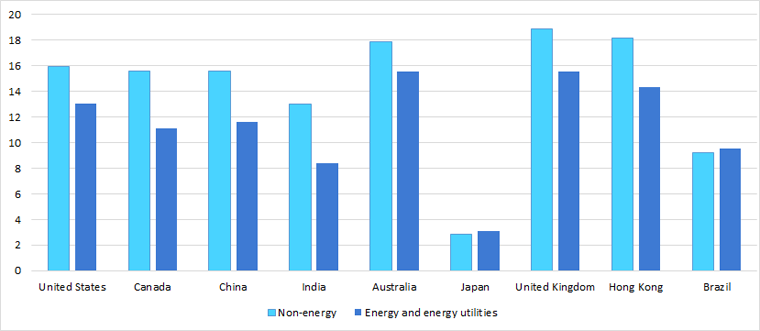Women in senior management roles at energy firms remains stubbornly low, but efforts to improve gender diversity are moving apace (IEA 2021)
March 2022 - It has been well-documented that women in leadership positions enable companies to maximise the power of diverse perspectives and innovative decision making, which improves the overall success of a firm’s performance. S&P 500 companies with women in senior management above the median saw a 30% higher return on equity and a 30% lower earnings risk relative to lower-ranked peers (Bank of America Global Research). Yet, historically women have been consistently under-represented in senior managerial positions and in the boardroom across industries, even more so in energy-related sectors. According to an OECD and International Energy Agency (IEA) analysis of data from approximately 2 500 firms classified in energy-related sectors, women make up just under 14% of senior managers, with representation strongest in the utility sector. Excluding utilities, women hold less than 12% of leadership roles. This compares with 15.5% of the 30 000 non-energy firms in the sample.
|
Figure 1: Female representation in senior management in different sectors and industries, 2019
Source: IEA. All Rights Reserved |
Differences in gender diversity at the board level can be driven by policy and cultural factors from the country headquarters of the firms (OECD Corporate Governance Factbook, 2019). In most countries, there are more women in senior management roles in non‑energy firms when compared to energy and energy utility firms. The countries with highest representation of women in energy firms are Australia (15.5%) and United Kingdom (15.5%), and the lowest is Japan (3.1%).
|
Figure 2: Country headquarters and gender diversity of senior management, 2019
Source: IEA. All Rights Reserved |
There is a higher representation of women leadership positions at large energy‑related multinational enterprises, many of whom have put in place corporate policies focused on diversity and inclusion. One reason for this is that larger firms tend to come under increased scrutiny from investors and are therefore more likely to have adopted comprehensive gender employment practices. This is also true for publicly listed firms. And finally, firms that operate in multiple markets may face greater scrutiny, with incentives to meet the demands of the market for which concern over diversity is most pronounced.
Overall, looking at the age distribution of executives, there are some signs of improvement in participation of women in senior management roles at energy firms. Nonetheless, the percentage of women as senior managers and board members remains stubbornly low. Given the low starting point, capitalising on women’s potential contribution could be years away for most energy firms. Strengthening gender diversity in the energy sector requires long-term efforts to boost inclusion. Attracting and retaining a diverse workforce in the energy sector is more urgent now than ever to ensure the innovation and inclusive perspective needed to sustainably navigate the low‑carbon transition.
Further reading
Commentary from 20 May 2021: full version
Read more about the International Energy Agency’s work on energy and gender
Related Documents



